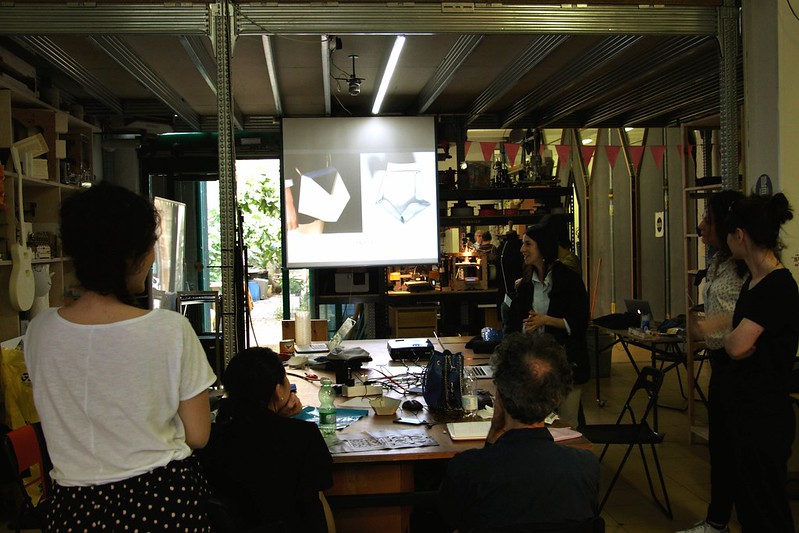Grab your favorite kombucha, slide into your comfiest joggers, and imagine you just landed your first big payday (congrats!). Now, you could toss your cash into the usual suspects—index funds, muni bonds, maybe a blue-chip stock or two—but where’s the fun (and the Instagram fodder) in that? New money is all about novel playgrounds: high-octane, slightly nerdy, totally brag-worthy investments that your parents will never understand. Think disaster-insuring ETFs, cyber-castles in the metaverse, and farm-to-fork meat made in a lab. Ready to see what the cool kids are putting their chips on in 2025? Let’s go.
1. Catastrophe Bond ETFs

Cat bonds used to be the exclusive domain of ultra-HNW family offices, but 2025 gave rise to the first retail cat-bond ETF, Brookmont’s ILS. Imagine earning double-digit yields by essentially insuring against hurricanes or wildfires—crazy, right? But that’s the point: new money loves blending altruism (protecting insurers) with yield chases. With $17.7 billion in cat bonds issued in 2024, ILS cracked open a market once reserved for reinsurance titans, allowing anyone with a brokerage account to play disaster-dealer. The Swiss Re Global Cat Bond Index jumped 17 percent last year, proving disasters can be… profitable, per Business Insider.
Now, retail investors pore over parametric triggers and modeled loss probabilities like they’re reading Reddit AMAs. Morning meetings now include scenario stress tests for “Hurricane Zeta+” and “California Megaâ€Drought,” all while sipping oat-milk lattes. Advisory fees have spiked too—cat bonds need experts to decode the jargon, and Wall Street is happy to oblige. Whether hilariously nerdy or quietly apocalyptic, new money loves this frontier, because when the next big storm hits, they might just cash in.
2. Crypto Staking Platforms

Forget Holding Bitcoin in cold storage; the real show is staking PoS tokens via streamlined platforms. With the Bankrate team naming the best crypto staking sites for 2025, newcomers flock to earn 5–15 percent APY on assets like Solana, Avalanche, and a smattering of “meme” PoS coins. They love the idea of “set it and forget it” income without selling their bags—like having your cake and eating it, then earning more cake.
Discord channels hum with hot takes: which validator has 0 percent commission, who’s got the slickest UI, and will your tokens get slashed over a missed signature? It’s a glorified savings account for the blockchain generation, complete with gas-fee dramas and lock-up periods that feel exotic compared to traditional CDs. New money’s mantra: “Don’t just own crypto—deploy it.” Plus, KYC-enabled giants now offer insured staking, so you can sleep—mostly—well at night.
3. Private Credit Vintage Loans

As public markets wobble, private credit has become the stealth mode for yield-hungry investors. Just ask the private credit barons worth $61 billion who surged into wealth ranks in 2025. New money pours into mezzanine debt, unitranche loans, and direct lending to mid-market firms—earning spreads north of 700 basis points over Treasuries. According to Bloomberg, it’s like being the bank without the Fed, and returns trounce most corporate bonds.
Zoom calls now feature term sheets instead of ticker symbols, and LP slots in top funds are the new invite-only parties. These loans aren’t sexy—no flashy ticker, just covenants and credit docs—but they cushion portfolios when equities tumble. Plus, direct originations let wealthy folks flex their business chops, negotiating covenants and covenants-lite like deal-makers on TV. The vibe: “I’m not just investing, I’m underwriting.”
4. Fractional Real Estate Platforms

Buying the full penthouse is so 2010—today’s wave is fractionalized ownership on platforms like Fundrise, Cadre, or Pacaso-style vacation homes. According to Forbes, fractional investing is exploding as AI-driven platforms unbundle commercial and luxury real estate into bite-sized shares. You can own 0.5 percent of a Miami condo or 2 percent of a SoHo loft, collecting proportional rents without property-managing nightmares.
Users brag about diversifying across 10+ properties in 10+ cities, reducing single-asset risk. There’s an app, of course—complete with heat maps, IRR projections, and chat rooms where you flex how your real-estate portfolio has “been killing it.” Fees run around 1 percent AUM, but new money will pay for the bragging rights. And yes, the tax docs still arrive every April, but Mamma’s cake is rising.
5. Cultivated Meat and Sustainable Proteins

Lab-grown meat isn’t just for pet food in the UK anymore—investors are backing cultivated-protein startups vying for the multi-billion-dollar alt-protein market. The Financial Times reports the UK became Europe’s first to approve cell-cultured chicken for pet food, signaling regulatory tailwinds for human consumption. Good Meat, UPSIDE Foods, and Mosa Meat raised rounds north of $40 million in 2024 alone.
New money digs this because it’s green, cruelty-free, and potentially hyper-scalable—all while riding cluster-funding hype cycles. They gush about 17 percent CAGR projections to 2031 and how being an early Series A investor in “meat that never met a cow” is the next Airbnb. Bonus: taste-tests at investor dinners. “Did you try the cultivated duck dumplings? Divine.”
6. Space-Tech Startups

Space is the ultimate flex zone. From micro-sat constellations to asteroid-mining R&D, new money hustles for runway hat-tricks in the cosmos. Whether it’s launch services or space-debris removal, investors want a piece of the orbital pie before terrestrial markets stagnate.
Satellite-internet plays promise global broadband; earth-monitoring firms hawk climate-data subscriptions; and space tourism dreams aren’t just for Bezos and Branson anymore. LPs sit in hybrid board meetings—part sci-fi fan, part profit-seeker—discussing burn-rates and orbital slots. The countdown vibe is addictive: “T-3 months til demo launch!”
7. Digital Fashion & Phygital NFTs

Digital wardrobes are booming. Brands drop limited-edition skins and “phygital” handbags, minted on blockchain and redeemable IRL. Now you can flex Gucci on Roblox and in real life, collect virtual sneakers with authenticated provenance, and flip them on secondary markets.
New money adores the convergence of streetwear hype and Web3 scarcity—something about “digital twin ownership” feels postmodern-rich. Virtual fashion shows in Decentraland are the new front row, and avatar makeovers are as serious as Botox appointments. The catch: gas fees and temperamental smart contracts, but that’s just the price of admission.
8. E-Sports Franchise Stakes

Owning bits of a League of Legends org or Overwatch League team? It’s real. Professional franchises have outperformed major public indexes, and the barrier’s coming down: some regional clubs now offer SPV-style shares to accredited newcomers.
Board meetings talk ticket rev shares and media-rights pools more than goals or touchdowns. It’s a heady mix of gaming passion and real-asset upside—plus, Zoom calls double as LAN-party chats. Even celebrity athletes are buying in, and that’s hardly the peak of cool.
9. Content-Creation Equity Deals

Forget old-school royalties; welcome to the creator economy’s new frontier. Platforms like Substack and Patreon now issue revenue-share notes or equity-linked tokens to top influencers, locking in a cut of future earnings.
Now you can co-invest in your favorite podcaster’s merch line or buy into an up-and-coming streamer’s tokenized ad revenue. Because what’s more modern than owning part of someone else’s personal brand? It’s like venture capital for meme lords—and if they blow up, you ride their rocket.
10. Voluntary Carbon Credits

Offsetting emissions with a portfolio of carbon credits has gone mainstream. Companies of all sizes voluntarily deploy credits through 2040, boosting market integrity—and retail access is following suit.
New money diversifies with forestry, cookstove, and methane-capture credits, treating carbon like another alternative asset class. They watch price indices, long or short offsets speculatively, and boast serious ESG street cred. Imagine bragging, “I own 1,000 tCOâ‚‚ of verified rainforest protection.”
11. Boutique Wellness Retreat Funds

Wellness isn’t just a weekend escape; it’s a diversification strategy. Sophisticated investors now back operator-managed retreat portfolios—think digital-detox cabins, cryotherapy spas, and ayahuasca lodges—in emerging markets from Costa Rica to Bali.
Global wellness tourism topped $1.6 trillion in 2024, and these funds promise IRRs north of 8 percent. High-net-worth circles debate “retreat yield curves” at weekend brunches, fund docs read like travel guides, and the due-diligence trip is as much about Instagram content as P&L. It’s self-care meets self-made millionaire.
12. Premium Collectibles & Sneaker Drops

Finally, the OG alt-asset: collectible drops. From limited sneaker collabs to rare trading cards, investors flip digital raffles and dust off slab-graded baseball cards for triple-digit returns.
Sneaker resale revenues hit $6 billion in 2024, and touts haggle over “size-10 Dior x Jordan” in private Discord channels. These aren’t just toys; they’re culture-driven, near-perfect stores of value with built-in scarcity. Nothing says “I get the culture” like unveiling a first-run Travis Scott Air Force 1 on your feed.
This article is for informational purposes only and should not be construed as financial advice. Consult a financial professional before making investment or other financial decisions. The author and publisher make no warranties of any kind.








